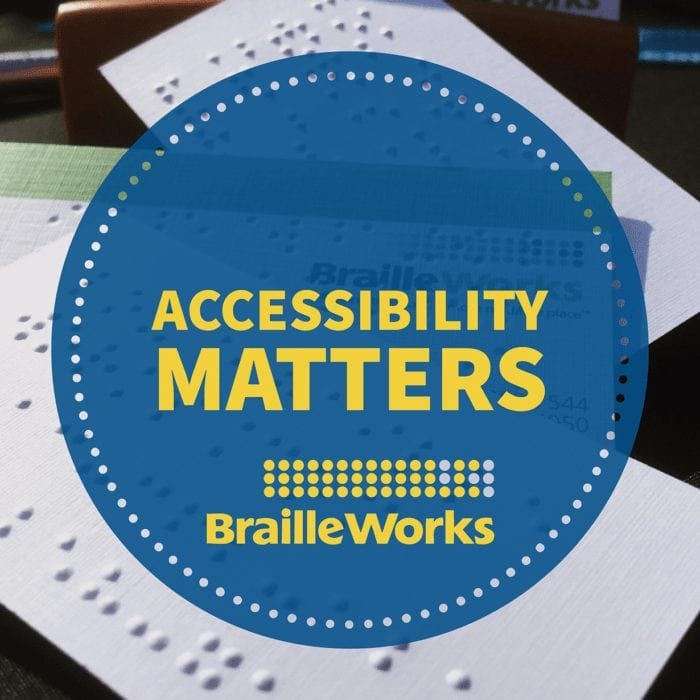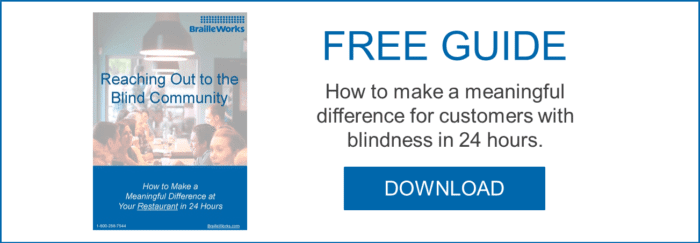Why Accessibility Matters
Published onWhat is Accessibility and Why is it Important?
When it’s broken down, the word accessibility is the “ability” to “access” and really this is why the topic is so important. Broadly stated, it’s intentionally designing the world to include everyone, regardless of disability. It’s working so others have access to more of life because this accessibility matters.

Business is a part of life. As such, this includes designing and creating a company’s products and services to be used by as many people as possible; both those living with a disability and without.
Accessibility defined is the ability of being reached, approached, used, or understood. The Merriam Webster dictionary has a simple definition of it available on their website as follows:
Simple Definition of Accessible
: able to be reached or approached
: able to be used or obtained
: easy to appreciate or understand
When speaking about accessibility in relation to disabilities however, accessibility refers to how something is designed to be used, reviewed, read, or otherwise accessed by someone who is living with a disability or impairment of some kind. This does not imply solely wheelchair access ramps, nor does it mean just having braille signs at a business.
As we’ve been helping to connect businesses with the visually impaired community for nearly 30 years, we want to share what we have learned and help clear up some of the confusion about what accessibility is and what businesses can do to help. While there is a great deal of information out there on the web that speaks to physical or environmental accessibility, we’ll focus our own contributions on sharing information about providing accessibility for people who are blind, or who have a visual impairment.
Accessibility encompasses many solutions and is best looked at as an on-going process of working towards including more people in meaningful ways. When it comes to including those with a visual impairment, these solutions include braille, large print, electronic document accessibility, and audio versions of text.
Who Needs Accessibility?
To understand who needs accessibility, we’d encourage you to think about why- why am I researching accessibility and who am I trying to include?
If you have a business that is very visually oriented, where interaction is dependent upon being able to see a menu, read the terms and conditions, or asks customers to sign a contract, then it’s likely that your business needs accessibility options for your customers. When it comes to including customers with visual impairments, such options include:
- Having braille and large print copies of your menus and other business communications.
- Providing accessible electronic documents; available in formats like accessible PDF, which is a Section 508 compliant electronic document.
– AND / OR – - Having an audio or live reader copy of statements and contracts that customers with disabilities can request should they so choose.

The federal government has passed several laws about who needs to provide accessibility and if you’re a business looking to comply with a specific law, we encourage you to reach out to a lawyer who specializes in disability and accessibility laws.
Some laws about disability and inclusion to note are: the Americans with Disabilities Act of 1990, and the Rehabilitation Act 1973, and the more recent Affordable Care Act of 2010. You can read about these on this blog, as we have a team of Accessibility Specialists who publish their findings about how companies can comply with the law and reach out to actual people in beneficial ways.
Related:
- ADA Accessibility | Overlooked Areas can Result in Fines and Lawsuits
- What is Section 1557 of the Affordable Care Act?
- Easing 508 Compliance Concerns with Some Practical Advice and Resources
- The Tale of Two Titles: Title II and Title III; ADA Compliance
Why Accessibility Testing is Important.
Many factors contribute to creating an accessible solution; transcription, quality assurance, accuracy, and checking for compliance against applicable laws and best practices. Accessibility testing ensures that the job gets done right, that your message is free from errors and meets the standards of accessible communication.
Accessibility testing is an extremely important part of producing accessible business documents, which is why we provide four steps of quality control to ensure accuracy and compliance. If you’re interested in learning about how we handle that process here and would even like a business document of your own checked for compliance, please check out this post about a Free Document Accessibility Review.

Why Accessibility is Good for Business.
Accessible practices can be good for everyone and including more people in your business can give you access to a larger pool of potential customers. There are many benefits that come with accessibility that are beyond legal protections, such as the good will such an act creates, and the relationships you can build in your community.
Including everyone is more than just the right thing to do and accessibility can be seen as a smart business decision overall. To see how this might impact your business, check out these whitepapers on industry accessibility:
Why is Accessibility Important in Restaurants?
We’ve written before about how restaurants can prosper by offering braille menus and becoming more accessible. If you work in the restaurant industry and want to learn how you can start making a difference, check out our whitepaper on reaching out the visually impaired community for restaurants.
Why is Accessibility Important in Healthcare?
Would you agree to a medical procedure without reading the fine print? What about one that was for your kids? Patients who are blind and visually impaired have the right to be able to read medical documents for themselves. Hospitals, doctor’s offices, medical facilities, and healthcare providers of all kinds can help make communication easier by providing accessible documents. Below is a list of some of those documents and forms that can be made accessible.
- Privacy Statements
- Authorization Forms
- Consent Forms
- Admission Forms
- Statements and Billing Documents
- Evidence of Coverage
- Annual Notice of Change
- Summary of Benefits
- Provider Directories
- Pharmacy Directories
- Formularies
Why is Accessibility Important in Banking?
People with disabilities are still in need of banking services. They are still able to purchase stocks, have a 401k, and apply for a credit card or a second mortgage. People with disabilities are consumers and as the population ages and people are living longer it is probable that more of your current clients will eventually require accessible services.
Imagine being a person who is blind or has low vision and you receive a standard bank statement. You want to reconcile your finances, but can’t do this without contacting another person to assist you. Your independence and privacy has been removed. How would that make you feel? Would you want your friends or neighbors to know your financial situation? Would you want them to know your purchases and services? It is safe to say no one would choose to give up his or her privacy and independence in this manner. However, this is a reality for some of your customers. You have the ability to give your customers independence and gain respect as a socially responsible company.
[Read More about Accessible Banking]
Recently our team has also put together a resource for bankers and those who work in the financial industry to show how accessibility can help save them time and money. If you want to learn how accessibility laws impact financial institutions and what banks can do to protect themselves, then be sure to check out our Banker’s Guide to Accessibility.
Resources
Categorized in: Accessibility, Banking, Government, Health and Wellness, Informational, Restaurants
This post was written by





Comments are closed here.